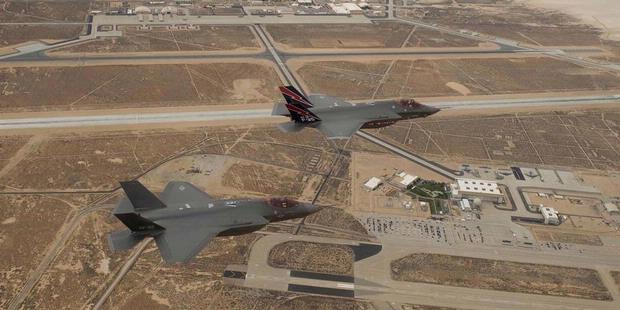WASHINGTON DC-(IDB) : Khawatir dengan perkiraan biaya operasional dan perawatan yang bisa mencapai 1 triliun dollar AS (Rp 9,07 kuadriliun), Angkatan Bersenjata Amerika Serikat memutuskan mengurangi jumlah pangkalan yang akan menjadi basis operasi pesawat tempur masa depan F-35 Lightning II.
Majalah penerbangan Aviation Week, Jumat (2/3/2012), menyebutkan, dua calon operator utama F-35 di AS, yakni Angkatan Udara dan Angkatan Laut AS, mulai meninjau kembali rencana pengoperasian jet tempur generasi kelima tersebut untuk memangkas biaya operasi dan perawatan (O&S cost).
Kepala Staf AU AS Jenderal Norton Schwartz mengatakan, pihaknya semula berencana menempatkan F-35 di lebih dari 40 pangkalan. "Dengan perkembangan terbaru ini, kami mengurangi jumlah pangkalan menjadi sekitar 30 pangkalan saja," ujar Scwartz.
Pengurangan basis operasi F-35 ini sejalan dengan rencana AU menutup beberapa pangkalan dalam rangka pengurangan kelebihan infrastruktur yang mereka operasikan hingga 20 persen. AU AS berencana mengoperasikan varian F-35A untuk menggantikan armada pesawat F-16 Fighting Falcon.
Ini adalah perkembangan terbaru dari program Joint Strike Fighter (JSF), yang sebelumnya sudah diwarnai sederet kabar tak mengenakkan, mulai dari pembengkakan biaya pengembangan program, berbagai masalah teknis yang ditemukan saat uji terbang, dan kemungkinan penundaan produksi, pengurangan jumlah pesanan, sampai pembatalan pesanan.
Departemen Pertahanan AS telah memutuskan menangguhkan pemesanan 179 unit F-35 dalam lima tahun ke depan sebagai bagian dari langkah penghematan anggaran pertahanan AS. AS sedianya akan membeli sekitar 2.400 unit F-35 untuk menggantikan seluruh armada F-16, F/A-18, dan AV-8B Harrier II, yang selama ini menjadi andalan AU, AL, dan Korps Marinir AS.
Kabar tersebut memicu kekhawatiran negara-negara calon pembeli F-35 bahwa harga satuan pesawat itu akan naik lagi. Jepang sudah menyatakan akan membatalkan rencana pembeliannya apabila harga dinaikkan dan jadwal pengiriman tertunda.
Sementara Italia, salah satu dari delapan negara di luar AS yang menjadi mitra utama program JSF, sudah memutuskan memotong rencana pembelian 131 unit F-35 sebesar 30 persen. Negara-negara lain dikhawatirkan akan mengikuti langkah Italia.
Meski demikian, dalam pertemuan yang difasilitasi Menteri Muda Pertahanan Nasional Kanada Julian Fantino di Kedutaan Besar Kanada di Washington DC, AS, Kamis hingga Jumat (2/3/2012), perwakilan sembilan negara mitra JSF, yakni AS, Kanada, Inggris, Australia, Turki, Denmark, Norwegia, Italia, dan Belanda, menyatakan tetap mendukung penuh program F-35 tersebut.
Sumber : Kompas




